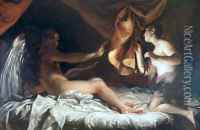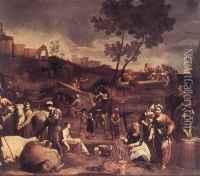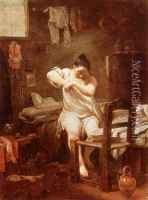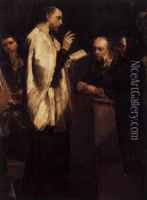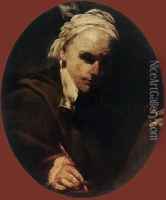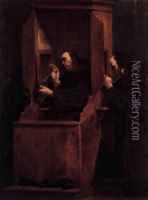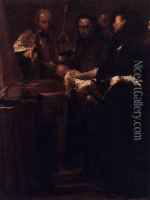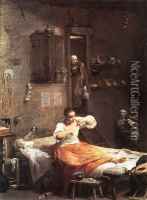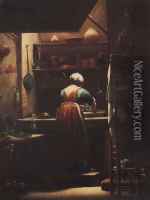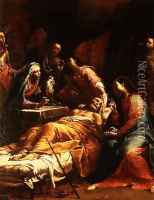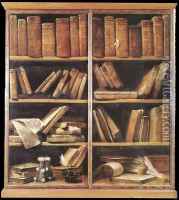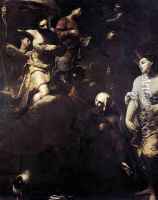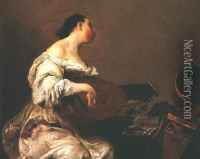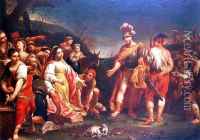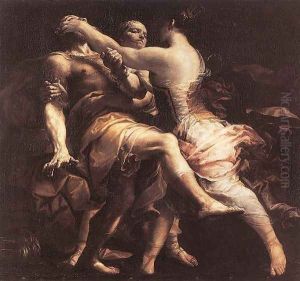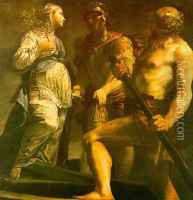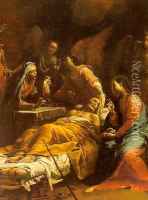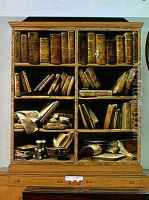Giuseppe Maria Crespi Paintings
Giuseppe Maria Crespi, also known as Lo Spagnuolo (The Spaniard) due to his fondness for Spanish attire, was an Italian Baroque painter born on March 14, 1665, in Bologna. He was a notable figure in the Bolognese School of painting and is recognized for his distinctive style, which was characterized by a dynamic use of light and shadow, as well as a more relaxed and informal approach to composition compared to his contemporaries.
Crespi's early training was with Angelo Michele Toni (1640–1708), a Bolognese painter. He later joined the workshop of Domenico Maria Canuti, where he further honed his skills. Crespi's art was also influenced by the works of the Carracci family, especially Annibale Carracci, whose works were foundational to the Baroque style in Bologna.
Crespi's oeuvre is diverse, spanning from genre paintings, religious works, to portraits. Among his genre paintings, he is particularly known for his series of the Seven Sacraments, which are praised for their intimate portrayal of everyday life in the 18th century and their subtle religious undertones. His religious paintings often featured saints and biblical narratives, depicted with a sense of humanity and warmth that set them apart from the more formal ecclesiastical art of his time.
Not only was Crespi successful as a painter, but he was also a respected teacher, counting Giovanni Battista Piazzetta and Pietro Longhi among his students. His influence can be seen in the works of these later Venetian painters, who carried forward his legacy of capturing the human element in their works.
Crespi continued to work and receive commissions throughout his life, enjoying significant success in his career. He passed away on July 16, 1747, in his hometown of Bologna. Today, his works are held in high esteem and can be found in major museums and collections around the world, showcasing his contribution to the development of Rococo style and genre painting in Italy.
